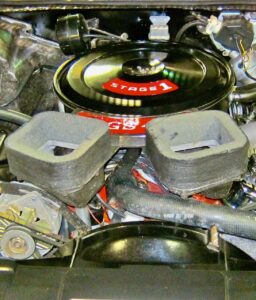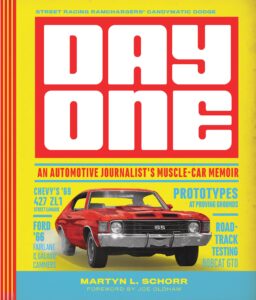Certainly not in keeping with Buick’s traditional image, the ’70 BUICK STAGE I GS-455 – FIRST ADULT SUPERCAR catapulted the Flint automaker into the heat of the battle for Supercar supremacy.
The Skylark GS-455, in 360 horsepower Stage I trim, was the industry’s first “adult” Supercar. It was a powerful, high-quality, well-balanced midsize coupe (or convertible) with superb ride and handling qualities. Yet it was almost invisible compared with competitive offerings like the SS Chevelle, GTO, Road Runner or Cobra Jet Torino. Tasteful GS Stage I fender emblems were the Gran Sport’s only status badging.
“Quiet” is the best way to describe the Stage I GS-455’s appearance – but not its performance! Having driven GS Buicks, including Stage I Skylarks, at GM’s Milford Proving Ground since the first Riviera GS in 1965, I was a believer. No carmaker did a better job of matching chassis/suspension tuning to powertrains than Buick. Once Buick started building Skylarks with 455-inch engines in 1970, they became “players” in the highly competitive Supercar Sweepstakes.
Buick dealers did not have a lot of experience selling performance cars to young people. Because Skylark Gran Sports were premium-priced and void of scoops, stripes and wings, they didn’t appeal to enthusiasts who wanted to “make a statement”. However, that all changed on February 9, 1970, when Buick announced the GSX, “Another Light-Your-Fire Car From Buick”. Featuring a bold front spoiler, beautifully integrated rear spoiler, distinctive striping and graphics, badging and paint treatment and a black hood with faired-in tachometer, a production Saturn Yellow GSX broke cover on February 10 at the Chicago Auto Show.
 For the 1970 model year, GM lifted its self-imposed 400-inch midsize model displacement ban, allowing Chevrolet to market a 454/450 Mark IV big-block Chevelle. Buick, Oldsmobile and Pontiac offered 455-inch Skylarks, 4-4-2s and GTOs. Once magazines started road testing new models, it was obvious that 360-horsepower ’70 BUICK STAGE I GS-455 – First Adult Supercar delivered performance numbers equal to, or better than, cars powered by higher output engines.
For the 1970 model year, GM lifted its self-imposed 400-inch midsize model displacement ban, allowing Chevrolet to market a 454/450 Mark IV big-block Chevelle. Buick, Oldsmobile and Pontiac offered 455-inch Skylarks, 4-4-2s and GTOs. Once magazines started road testing new models, it was obvious that 360-horsepower ’70 BUICK STAGE I GS-455 – First Adult Supercar delivered performance numbers equal to, or better than, cars powered by higher output engines.
The Stage 1 GS-455 engine was rated at 360 horsepower at 4,600 rpm and an unrivaled 510 pound/feet of torque at 2,800 rpm. It was obviously suspect that there was only a 10-horsepower difference between standard and Stage I engines. When you opted for Stage 1, the 10.5-to-1 engine was fitted with a re-jetted and modified Quadrajet four-barrel with fresh air induction, high-performance valve train, .490-inch-lift, 326/348-degree-duration camshaft and new heads with 2.12/1.75-inch valves. If you chose an automatic transmission, it was a beefed TH-400 with a 2.48 First gear.
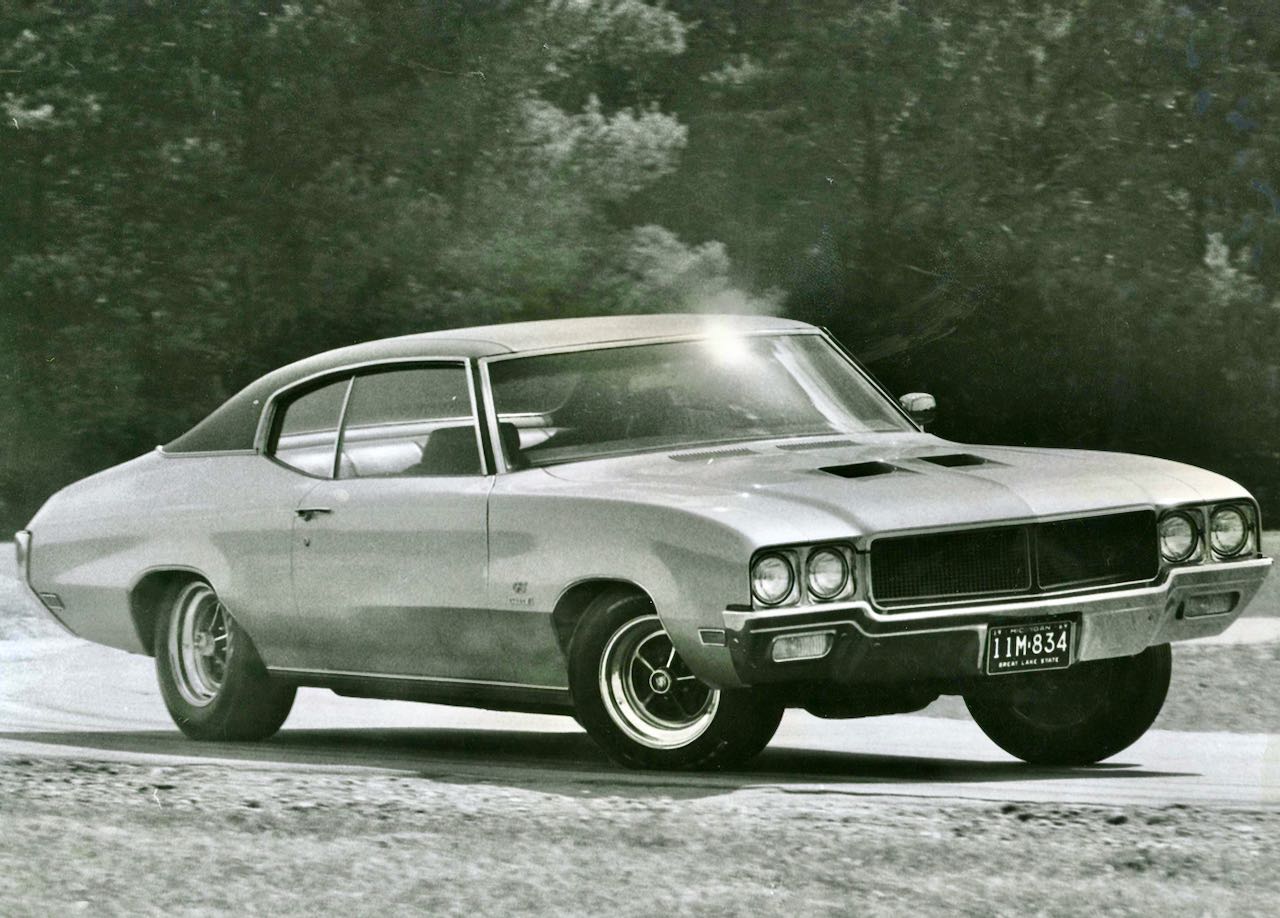 The Stage 1 engine was a $113.75 option on the $4,932 non-air-conditioned, automatic GSX that Joe Oldham tested. The Electric Banana, was featured in the October 1970 issue of Hi-Performance CARS. He obviously liked it: “Buick’s GSX was the best handling Supercar we had driven at the time. Over the road with the windows up, the Stage 1 GSX was silent despite the 455 cubes throbbing under the hood”.
The Stage 1 engine was a $113.75 option on the $4,932 non-air-conditioned, automatic GSX that Joe Oldham tested. The Electric Banana, was featured in the October 1970 issue of Hi-Performance CARS. He obviously liked it: “Buick’s GSX was the best handling Supercar we had driven at the time. Over the road with the windows up, the Stage 1 GSX was silent despite the 455 cubes throbbing under the hood”.
Back in the day it was not unusual for carmakers to keep the lid on horsepower ratings. Insurance companies had a field day raising rates on high-performance cars, especially for young owners. The higher the horsepower, the higher the rates. While all eyes were on horsepower, insurance companies paid little attention to torque ratings, which are the key to actual performance. The Stage 1 had the highest torque rating, at 510 pound/feet, of any performance engine in 1970 and held that honor for a number of years. Prior to the 1970 Winternationals, the NHRA “factored” the Stage I Skylark, rating the engine at 400 horsepower!
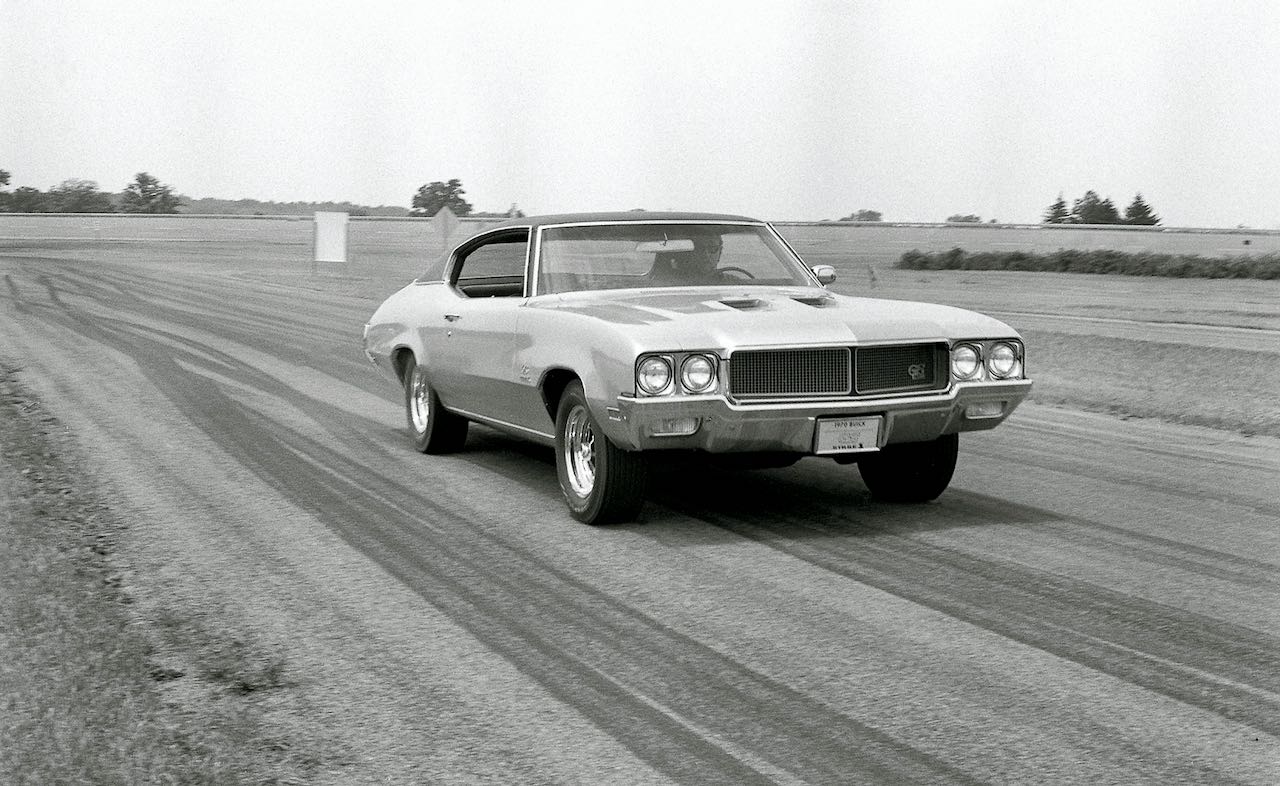 Magazine road tests from that period revealed a wide range of performance times, indicating that all test cars were not “created equal”. When I tested a pre-production Stage I GS-455 Skylark for SUPERCARS ’70 ½ in June 1969, it was an automatic with 3.64 Posi rear. My best quarter-mile time was 102 mph in 14.10 seconds. Oldham tested a GSX, same specs as my Skylark, at E-Town and posted a best time of 103 mph in 14.0 seconds. He recorded a 0 to 60 mph sprint in 6.2 seconds. “It was quick. I can remember blowing off the likes of GTOs and 442s in informal runs late at night on deserted stretches of road.”
Magazine road tests from that period revealed a wide range of performance times, indicating that all test cars were not “created equal”. When I tested a pre-production Stage I GS-455 Skylark for SUPERCARS ’70 ½ in June 1969, it was an automatic with 3.64 Posi rear. My best quarter-mile time was 102 mph in 14.10 seconds. Oldham tested a GSX, same specs as my Skylark, at E-Town and posted a best time of 103 mph in 14.0 seconds. He recorded a 0 to 60 mph sprint in 6.2 seconds. “It was quick. I can remember blowing off the likes of GTOs and 442s in informal runs late at night on deserted stretches of road.”
Some West Coast magazines tested Stage 1 Skylarks that were considerably quicker and faster than the ones we tested. More than one magazine tested a GS that had been professionally “tuned”. It ran 13.30s at over 105 mph! Some of the Stage 1 test cars based in Los Angeles received special attention at Reynolds Buick in West Covina. Reynolds was the home of the record-setting Kenne-Bell Buicks, prepped by Jim Bell and driven by the legendary Lennie “Pop” Kennedy.
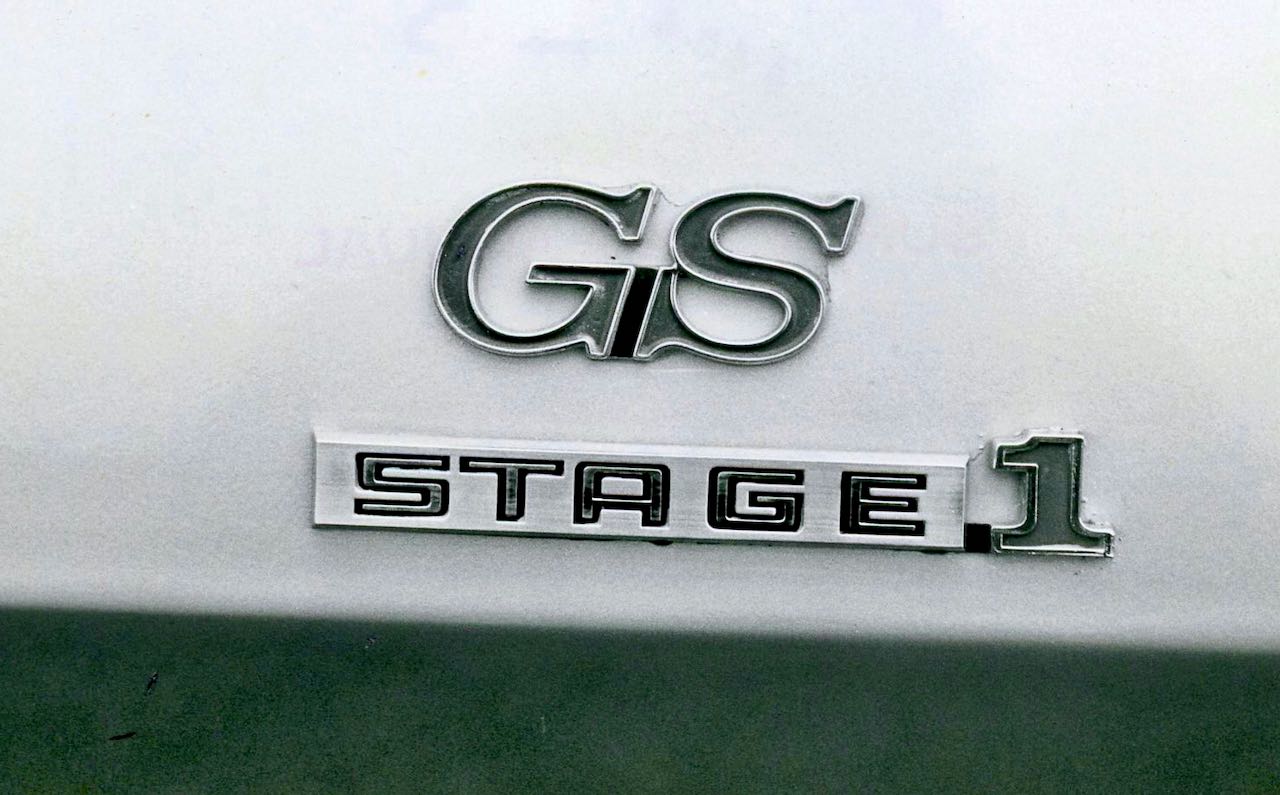 ’70 BUICK STAGE I GS-455 – FIRST ADULT SUPERCAR was the surprise hit of 1970. It was quick. It was fast. It delivered premium performance for those who understood the advantages of speaking softly and carrying a big stick. Joe Oldham said it all in his GSX road test: “No question, the Stage I Buick is one of the quickest, best running Musclecars of all time. It may also be the best handling.”
’70 BUICK STAGE I GS-455 – FIRST ADULT SUPERCAR was the surprise hit of 1970. It was quick. It was fast. It delivered premium performance for those who understood the advantages of speaking softly and carrying a big stick. Joe Oldham said it all in his GSX road test: “No question, the Stage I Buick is one of the quickest, best running Musclecars of all time. It may also be the best handling.”
To better understand the heritage of 1963 to 1974 Musclecars, check out DAY ONE, where this story – ’70 BUICK STAGE I GS-455 – FIRST ADULT SUPERCAR originally appeared: https://www.amazon.com/Day-One-Automotive-Journalists-Muscle-Car/dp/0760352364/ref=sr_1_1?s=books&ie=UTF8&qid=1493561421&sr=1-1&keywords=Day+One+by+Martyn+L.+Schorr


